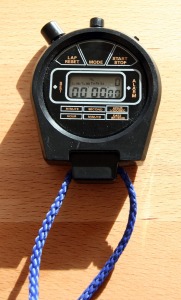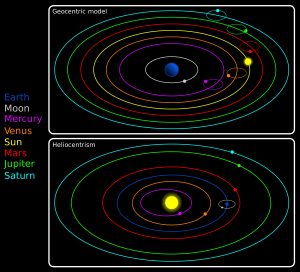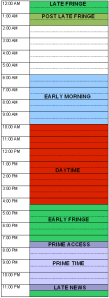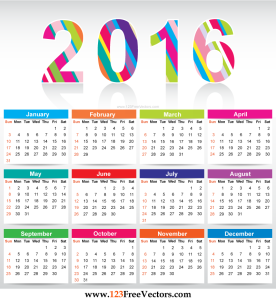CEP 818 – Synthesizing
At the beginning of CEP 818 I struggled to put into words what my definition of creativity was. As I navigated through the course and learned the many creative thinking tools a definition began to come into focus. Creativity has so many components and I now know the definition for creativity is not specific. If it is to include all the components it needs to be simple. To see where I landed on a definition please click the link below to read my white paper on the topic.
My Elevator Pitch:
CEP 818 – Playing
When I interviewed my creative friend about creativity she was very passionate about play time. She teaches kindergarten and very strongly expresses her students’ need for play time. She stated that this was when they were at their most creative. I took her opinion to heart when I read her response about play. I teach 8th grade and I am actively preparing my students for the next level. In all that preparation it is easy to have the time for play get pushed aside. It is however tremendously important. In Sparks of Genius the authors state “play returns us to the pre-symbolic drives of gut feelings, emotions, intuition, and fun from which creative insights stem.” (Root-Bernstein, 1999) This quote really resonated with me. My interpretation is that incorporating play into the classroom is a bit like hitting a pause button on all the outside factors and allows the students to see what is most important. It allows them to gain some perspective. Play also incorporates a stress free environment that allows them to breathe and release tension. So, play is great!
My topic throughout this course has been The Big Bang Theory. This is really a very vast topics and I have used the many different tools to explore it and create different learning opportunities for my students. As I began to imagine how to incorporate play to introduce the topic I was drawn to our nuclear fusion lessons. Nuclear fusion is the driving force behind the creation of all the elements with the exception of hydrogen. Hydrogen and some helium were created in the Big Bang, but all the elements are present thanks to nuclear fusion. Nuclear fusion is what happens when lighter elements slam together to create a heavier element.
When I teach nuclear fusion I use multi-colored mini marshmallows! This activity is quite simple and silly, but it is a lot of fun. I decided to transform this activity into an opportunity to play. I start out demonstrating the activity by having each student get two marshmallows and hold them in different hands. We talk about how they represent the hydrogen atoms because hydrogen has an atomic number of one and they have one marshmallow in each hand. Next comes a bit of silliness. They have to smash the marshmallows together while shouting the magic words “NUCLEAR FUSION!” The fusion simply won’t occur without those words. Our hydrogen atoms have now become helium atoms because the atomic number of helium is two. As we progress through the activity we make two more helium atoms. We then fuse all three to make carbon.
At this point I usually stop and have the students clean up and I am not sure why. In this small amount of time I usually witness a lot of “A Ha” moments and I never embrace it. Well, moving forward I am going to use this opportunity to incorporate play. Specifically, I am going to bring in symbolic play. Sparks of Genius describes symbolic play as a way to “foster tools such as analyzing, modeling, play-acting, and empathizing.” (Root-Bernstein, 1999) I would allow my students to spend more time fusing elements and challenge them to create the heavier elements in the periodic table. This will allow for deeper connections to the over arcing concept of The Big Bang Theory and brings in more fun!
CEP 818 – Embodied Thinking
Muscle memory is an amazing skill that the body has. It has been almost a year since I last shot a free throw on the basketball court, but I could step up to the free throw line now and sink that shot without warming up. That is because I spent so much time perfecting the movements of that shot. Movements is the key word of that phrase. Our bodies were made to move and those very movements can be harnessed to help us learn. As teachers we spend so much time learning about all the different learning styles our students may possess. More often than not our students have strong kinesthetic learning skills. They learn best through movement. Body thinking is a tool that allows learners to use their body as a tool to jumpstart thinking, learning, and creativity.
My topic of The Big Bang Theory can be difficult for students to visualize and transfer into long term memory. Many of the topics are on a very small or very large scale. For example, nuclear fusion happens at the molecular level, but creates a massive amount of energy. Another topic that starts off on a very small scale is the formation of planets. The planets in our solar system formed through a process called accretion. They all start off as dust particles from nebulas. As the dust particles revolve around the sun they sometimes collide and stick together. Over time those clumps grow in size to become the planets we know them as today. That is a very simplified version, but you get the point.
A great way for the students to learn this process is to become the particles themselves. By going through the process of accretion themselves they can make deeper connections to the concept. Each students starts off as an individual dust particle. They stand in a circle around the teacher.
Individual students are dust particles. 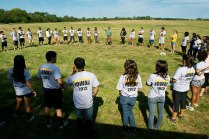
They then begin to walk in that circle going counterclockwise. The students will walk with different paces and when they do they will “collide” with one another. When they collide “static electricity” will cause them to stick together and the students will link arms. This continues until the whole class in one clump and they have formed a planet. Along the way though they will embody the different types of masses.
A pair of students is called a chondrule.![IMAG0421[1]](https://sarahherberholzmaet.files.wordpress.com/2015/12/imag04211.jpg?w=210&h=125)
Groups of 4-8 are meteoroids. Groups of 9-11 are asteroids. And it keeps going.
As the groups get larger how the individual particles move will change. They will experience that it was easier and quicker to move as an individual particle and you were less likely to collide with other objects in space. As a large mass you move slowly and often collide with other particles. Embodying the particles as they clump together allows the students to draw greater connections to those movements in space they would not get if they were simply reading from the book or watching it happen in a video.
This activity is meant to be done as the introduction to the concept. As the students are embodying different size masses they are given cards with information about each mass. They can begin to consider this information as they continue through the activity. As we continue through the unit and dive deeper into the content the movement activity can always be a reference point. They can remember how the smaller masses moved with a quicker pace, while the larger masses moved a little slower. This takes them from the formation of a planet and into the formation of the solar system.
Photo credits:
http://now.uiowa.edu/2012/08/gaining-iowa-edge
http://firstgradeabcs.blogspot.com/2012/02/valentines-day-recap-vowel-pair.html
CEP 818 – Architecture of Space
My Space:
A space that fosters creativity for me can be found in my own home. I have a smaller house and it has a small living room that I certainly do a lot of living in. It is a room with so many purposes. It is often where I dine, relax, grade papers, complete assignments, and hang out with friends and family. This room is simply comfortable and that makes it conducive for my creativity.
Below you will find a few pictures of my living room.
My living room is a great space to foster my creativity because it is personally engaging, but not too busy. It has many personal touches, like photos, blankets, decorations, and a dog! It is not too busy and cluttered, which can create distractions. It is well balanced. The furniture in the room can be used for many purposes. The coffee table has a large amount of work space and can be moved around to accommodate where I choose to sit. My papers often spread from the coffee table to the couch too.
Another reason why this room works so well for me is that I can do so many different things in here. I have an entertainment system with a variety of features and the furniture is arranged to allow people to view the television or sit and talk. You can not tell from the pictures, but the living room connects to the kitchen as well allowing people to converse between the rooms. Ultimately, this space is so functional because it was designed over time to meet the needs as I began living in the space. I made all of the design choices with the space allotted.
Rethinking Technology & Creativity in the 21st Century: A Room of Their Own
By Punya Mishra, William Cain, Sandra Sawaya, Danah Henriksen, & the Deep-Play Research Group, Michigan State University
My biggest take away from this article is the quote that says “The urge to interact on multiple levels is a powerful and organic human impulse.” (Mishra et al., 2013) No matter what plan your design vision holds, it can be overpowered by the need to interact and the people using that space to interact determine the method of interaction. In A Room of Their Own three classes were given high tech classrooms to use and customize to fit their needs. The classrooms were designed with the top-down design for classrooms that had both students present and learners who joined the classroom virtually. In all three of the classrooms the classes did not use all of the high tech features available to them. In fact, two of those classes repurposed the tech to meet their needs.
When designing a space, whether it be a classroom or for personal use, there best person to design the room is the person or people who are going to be using the space. Only those individuals know how what they are going to need. The features of those spaces also need to be multi-purpose. In A Room of Their Own two of the classrooms used iPads in different ways than the original design. Instead of keeping them in the fancy chairs they removed them and created a way to use them for interfacing between the students present and those accessing the class remotely. The iPad could still be used for its original purpose, but it now had a dual purpose. That is my final takeaway from the article. There needs to be flexibility in the design of the space. The people using the space must be flexible in how they use the features ad the components present need to be able to be used in many ways.
CEP 818 – Modeling
The purpose of a model is to take something, such as an idea or a concept, that is difficult to comprehend or understand and make it accessible. Models can make tiny things large and large things small. Models can also make complex ideas easier by simplifying it. They have such a huge potential as a cognitive tool. As a teacher asking a student to create a model requires the student to show mastery of a concept. That teacher can also create the model for the student as an instructional tool. The potential for models are vast.
In my topic of The Big Bang theory creating models allows the students to see how the Universe is laid out and where they are in the Universe. This is a topic that demands to be seen if it is to be comprehended. Even then that one model may not be enough. Very commonly the Universe needs to be modeled many ways for the students to connect and understand. There are so many dimensions that need to be considered when creating a model of the Universe. The Universe is 3-dimensional (3D), but it is not feasible to model it that way. A model of the Universe needs to go from 3D to 2D. This allows for a larger amount of information.
So, that is what I attempted when I created a model of the Universe to show where we are located in the Universe. This is called our galactic address. This is a standard we are required to teach. I could definitely have my students simply memorize the information, but they would never understand what it means. They need to see it modeled in order to make a stronger connection. To model the galactic address I started with the biggest picture and essentially zoom in step by step. The beauty of this message is that it can also model the other direction. The model can go from the small picture to the large picture. It is not a perfect model, but it gets the point across.
Models very commonly are not perfect. They can’t always demonstrate everything you want and you may need another model. My model is not perfect because it does not convey the scale. Scaling is another dimensional piece to consider. When I am creating a model of the Universe the scale is extremely shrunken down, but it is important to show the scale so they don’t lose site of the actual size. I would choose to use my model in connection with another model. Often going back and forth between the two. For my specific topic I was given a great model in the lecture CEP 818. This link demonstrates the scale of many different parts of the universe, from the things you need a microscope to see to the things you need a telescope to view. Each frame of the model has a scale to assist the viewer. Combining the two models supports my created model’s weakness and my model demonstrates something the other model does not.
Please follow this link to view the model I created.
CEP 818 – Creative “I”: Variations on a Theme
Below you will find a new version on one of my favorite songs. It is not perfect, but it is a start. I reimagined the lyrics to Jason Mraz’s song I won’t give up using what I learned from Twisting knobs and connecting things: Rethinking Technology & Creativity in the 21st Century by Danah Henriksen, Punya Mishra, & the Deep-Play Research Group Michigan State University. Their article takes a look into the origin of creativity and how the creative ideas emerge. I used a few of their ideas and expressed them using Jason Mraz’s lyrics.
Please click here to see my new lyrics and Jason’s original lyrics. The first part of the document has my lyrics and the second part is the original lyrics by Jason Mraz.
Reimagining song lyrics was a creative challenge for me. It put me outside of my comfort zone and I had to dig deep to finish this challenge. In the article by Henriksen and Mishra there is a quote that says “great works or ideas arise when inspiration is created through ideas fusing from different disciplines and experiences.” I think this quote represents this assignment very well. I am not calling my new song a great work of art, but I was challenged to combine different experiences. I had to consider what I took away from the article I read and combine it with a musical discipline. The musical piece was where I struggled. I didn’t find inspiration for the new song until I considered music I was very familiar with.
Another component of the idea that creativity stems from using prior knowledge and experiences. This is what I needed in order to be creative enough to create a new song using original lyrics. I had to use music I could hear in my head in order to create something new. Although this was a tough assignment for me to complete, it is very often an assignment option I give to my students. Some of them are so connected to music and it is a tremendous part of their identity. That music is the prior knowledge they use to reimagine the concepts we are using. After this, I know I will continue to give it as an option for future assignments. What a great way to demonstrate creativity.
CEP 818 – Abstracting
The Big Bang Theory is a massive topic. It does, after all, cover how everything we know today was formed. To teach this concept effectively the teacher has to be able to break it down into into simpler pieces that come back together to make sense of the whole topic. A great way of doing this is using the creative tool of abstracting. According to Robert and Mechele Root-Bernstein in their book Sparks of Genius “Abstracting is a tool used to pare away the excess to reveal the essence.” (1999) The essence is one of the most important features of the topic. When I use this to consider the Big Bang Theory I think about expansion. When I teach the Big Bang Theory we talk at length about the expansion of the Universe.

In the very beginning the Universe was condensed into one infinitely hot and dense point called singularity. When the Big Bang occurred everything in the point of singularity began to rapidly expand in every directions. At first it moved very quickly, but over time that rate of expansion decreased. When I began to imagine how to abstract this theory I kept connecting to the way Pablo Picasso’s abstracts were described in Sparks of Genius. The lines in his drawing were meant to represent the movement he was observing. I then imagined the expansion of the universe and everything expanding out from one point. This made me connect to a starburst image. In a starburst there is light expanding in every direction, much like the materials expanding after the point of singularity exploded. The lines of light represent the movement of the newly formed matter, energy, time, and space that was created by the Big Bang. They are continuing to expand, but they are slowing down. In the image the light around the edges of the images becomes faint because it is slowing down.
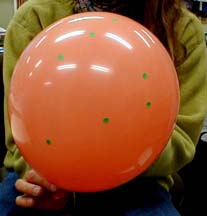
Another way to use the tool of abstracting is to incorporate a scientific demonstration that allows students to visualize the expansion. The image above shows a balloon with dots marked on the surface. When completing the demonstration the students will measure the distance between the dots and record them. As this balloon continues to be inflated the dots will mover further and further away from one another. The students will see this in the data table they are creating. It allows them to see how those distances are changing as well. Initially the space between the dots increases at higher rates, but as the balloon reaches the breaking point the dots do not move apart as quickly. This takes the abstract right back to the original concept. The rate of expansion in the universe is slowing down.
As I consider abstracting as a tool I can see that it allows for getting to the most important pieces of a topic. As a teacher it allows me to see what I want my students to have achieved mastery of when we are done with a topic. There are going to be a lot of other things that they learn as well, but abstracting allows me to prioritize my lessons when I am planning.
Sources:
CEP 818 – Defining Creativity
How would you define creativity? I think you would have a difficult time putting a definition together. Maybe that is the point. Perhaps creativity can’t be defined and that is what makes it so difficult to evaluate. When I assign projects to my students I always include creativity in the rubric, but when I am describing expectations in the rubric I always get stuck on creativity. What would full credit for creativity look like?
As I pondered creativity in my classroom I reached out to a friend from college who now teaches Kindergarten. I would consider her a creative person for many different reasons. She is a very talented singer, artist, and dancer. I have also had the opportunity to see how she sets up her classroom and you can see her creativity there as well. I thought it would be great to get a second opinion from a creative person in education.
I sent my friend questions that challenged her to define creativity and questions that evaluated the role of creativity in education. She found it very difficult to define creativity, but she thought that was the point of creativity. There are many different fields and mediums in which to be creativity. The best way she found to define creativity was to create or do something new.
This is how she connected creativity to education. Very often when students are completing assignments they simply meet the requirements laid out by the rubric and do not take an opportunity create something new or interpret the assignment with a different vision. They are completely okay turning in ordinary assignments that get them the points they need. This related to my next series of questions that inquired about teaching creativity. My friend did not think creativity was something educators can teach, but if we give the students opportunities to explore without the pressure of an attached grade then they may feel more comfortable to try new things and take some different approaches.
So, maybe that is what we need to see more of in education. She suggests that there be time dedicated to letting the students explore and play. It is a component of school that is slowly going away due to all the requirements placed upon teachers. Perhaps if we brought this time back into the classroom we would see a surge in creativity. It is definitely something to consider.
As continue to think about creativity I agree with the statements made by Mishra and Henriksen in Rethinking Technology and Creativity in the 21st Century. They said that in the educational field, creativity needs to have a universal meaning or definition in order for it to be evaluated. I think that a lack of structure in defining creativity is doing a disservice to our students when we evaluate them. What I may deem creative may not be creative according to another teacher. Our students need consistency so they are able to figure out a way to be creative.
When I evaluate creativity in my student products, a student will receive full credit in the creativity column when they have created a project that stands out from the other projects or interprets the requirements in a way that is new and unique. This meets the first criteria proposed my Mishra and Henriksen. They have broken creativity down into three categories: novel, effective, and whole. I have always looked for novelty, but I did not think about including the others in my evaluation. As I move forward I will add these to the rubric. This will help me show my students a concrete definition of creativity.
Mishra, P., Henriksen, D., & the Deep-Play Research Group (2013). A NEW approach to defining and measuring creativity. Tech Trends (57) 5, p. 5-13
CEP 818 – Finding Patterns
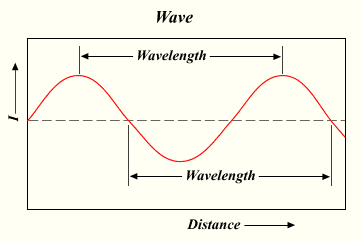
Patterning is a way to organize and make sense of different concepts in order to make a deeper connection and understanding. Patterns are sometimes a little more difficult to identify in certain scientific concepts, but they are there. When I first started to think about my topic of the Big Bang Theory I struggled to see patterns. The events at the beginning of the Universe did not occur with a specific frequency. When I thought of the word frequency I remembered some of the specific topics we learned while covering the Big Bang.
The Big Bang theory states that the Universe was once condensed into a point smaller than an atom. That point is called singularity. When the Big Bang occurred the Universe was created and began expanding. To this day scientists believe the Universe is still expanding. Obviously there are not any first hand accounts of the Big Bang, so scientists have had to rely on observations over long periods of time. As the scientist made observations they started to notice patterns. One of the patterns they noticed was the color of objects in space as they move. As an object is moving away the light emitted appears red and as an object moves towards the observed the emitted light appears blue. This is called Redshift.
The pattern in this concept is the frequency of the wavelengths of light. As an object moves away they wavelength gets stretched out. My students learned this concept by physically recreating redshift by walking at a constant pace, but before they started they were either moving forward or backwards. This changed the space between the students as they walked. The students have now visualized the pattern that is occurring when an object in space is emitting light while moving away.
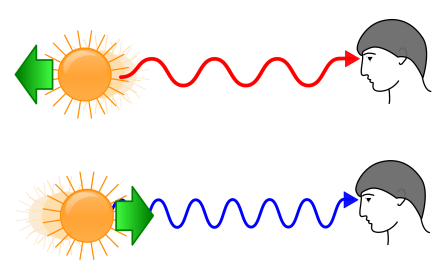
Visualizing the pattern in red shift allowed my students to make a stronger connection to the content and gain a greater understanding. It is clear that as I continue teaching this unit I can use patterns to my advantage. Within the remainder of the unit I teach on the Universe there are more patterns emerging. As I teach how the Universe formed the impact of gravity keeps coming up. Gravity impacts the life cycle of stars, formation of planets, solar systems and galaxy. It is a driving force in the formation of the Universe. How can I use this pattern to my advantage?
I think the best way to do this is to make gravity part of the conversation on a regular basis. I think the students should frequently draw connections to the role of gravity. One way to do this is to create a space in the student binders to log connections to gravity. As a class we can document gravity throughout the entire unit. As we continue to make connections the students will be transferring the role of gravity into their long term memory allowing to understand the concept. Identifying this pattern is what allows the students dig deeper into the content. The pattern becomes a very important tool.
CEP 818: Perceiving Time
In the first module of CEP 818 we were asked to pick a topic to focus on. I am teaching a new content this year, so I chose to focus on a unit and topic within that unit. I chose The Big Bang Theory. As I go through this unit with my students there are a lot of component of the Big Bang my students must take away with them. The Big Bang is theoretically responsible for the formation of everything in the universe. For the purpose of teaching by students it is categorized into matter, space, and time. This still leaves me with a lot to reimagine. For this assignment I am going to select time.
The images above show many of the ways that time is universally measured. You can think of time in terms of minutes, hours, days, months, and more.
Now think about some of the sayings we use to represent time:
“A watched pot never boils” “Time flies when you’re having fun”
In reality time does not move at any different rates, but perception of time does. This makes me think of the end of the school year. My coworkers and I marvel all the time about how the weeks feel so slow when we are in them, but at the same time we are surprised about how quickly the weeks as a whole fly by. There are so many factors that make us perceive time the way we do. This includes the amount of material left in the curriculum, student behavior, increasing number of end of the year activities, and the anticipation of summer vacation.
The anticipation for summer vacation made me realize that anticipation is how I reimagine time. When I am excitedly waiting for something to happen time seems to drag. When I don’t want something to happen time magically passes with ease. For example, I am taking a trip with my family over the Christmas holiday. We are pumped to get away together. The anticipation we feel is positive, but that is not always the case. Once vacation starts it is always amazing how quickly it is over. The end of the vacation is definitely not something I want to happen and it makes the vacation seem so fast. So, the perception of time can be directly tied to anticipation.
This brings me back to the images above that show the many ways time is measured. No matter what they stay the same. The Earth rotates at the same rate to complete one rotation to represent the day. That day is broken into 24 hours and 60 minutes in every hour. In the time it takes the Earth to travel in its path around the sun the Earth will have rotated 365 times. This represents one year. If I were to reimagine the images above I would use words instead of numbers and the words may be specific to each individual. The many different events in our lives impact how we perceive time. To elaborate, think again about summer vacation. If I represented summer vacation on a calendar for me with my perception it would be a smaller chunk of time. It goes by so quickly. Summer vacation for a parent that is used to children being in school may be perceived as a larger chunk of time because of the change in schedules. This parents calendar may look like a larger chunk of time than mine. Now think of the person who does not have a true summer vacation. This time on the calendar may be represented somewhere in the middle and you might call it average.
Reflection:
Perception can change everything. It can make a constant such as time, seem to accelerate or slow down. I know that time passing does not actually change, but it can definitely feel like it. As I move forward teaching the Big Bang Theory I need to make sure my students have a strong understanding of the different intervals of time. When teaching the Big Bang we talk about all of the things that happen in the first seconds of the universe. That’s right, I said seconds. the Universe started forming at an amazingly rapid rate. This is something I don’t think my students understand easily.
I think that their perception of time impacts how they process the events that follow the Big Bang occurring. The first few events I teach them happened within the first three seconds of existence. This is amazing. There are very few things that I can get done in a matter of three seconds. Then even more happens in the first three minutes. I can get more done with a few minutes, but it doesn’t compare to the formation of nuclei and extreme changes in temperature.
I teach the timeline for the Big Bang quite effectively, but perhaps I need to spend more time with the amount of time that passes with each event. When you think about how quickly everything theoretically happened it impacts your perception of time. And now we are back to the beginning of the topic. Perception.
This takes me back to how I reimagined a representation of time. I talked about creating a customize visual representation of time based on the individual. If I apply this to the Big Bang Theory the first few seconds make seem larger than later chunks of time. This is because of all that occurred in that short period of time. As you move through the timeline of the Big Bang some chunks of time will be smaller because there is less taking place.
It is quite easy to get lost when thinking of perceptions. There are a lot of tangents to take and many factors to consider. When appropriate I think this makes an excellent learning and teaching tool.







